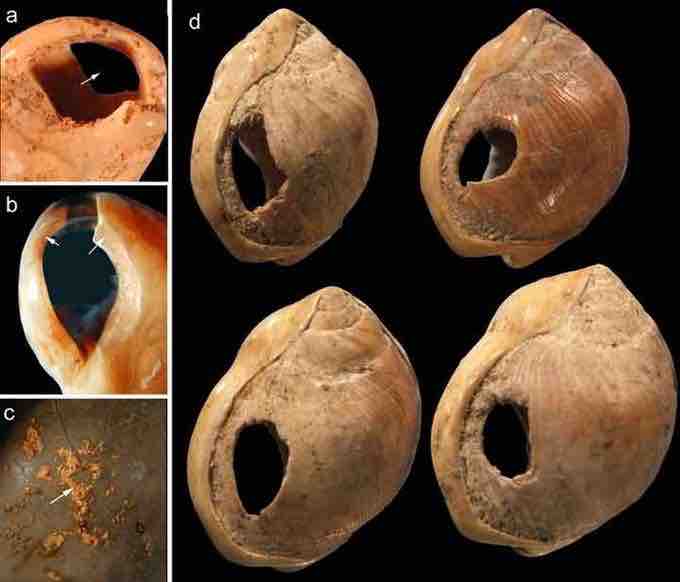The Paleolithic or Old Stone Age existed from approximately 30,000 BCE until 10,000 BCE, and produced the first accomplishments in human creativity. Archeological discoveries across Europe and Asia include over two hundred caves with spectacular paintings, drawings, and sculptures that are among the earliest undisputed examples of representational art-making. Sculptural work from the Paleolithic consists mainly of figurines, beads, and some decorative utilitarian objects constructed with stone, bone, ivory, clay, and wood. During prehistoric times, caves were places of dwelling as well as possible spaces for ritual and communal gathering. Unsurprisingly, caves were the locations of many archeological discoveries owing to their secluded locations and protection from the elements.
Venus Figurines
"Venus figurines" is an umbrella term for a number of prehistoric statuettes of women that have been found mostly in Europe, but also in Asia and Siberia, dating from the Upper Paleolithic. These figures are all quite small, between 4 and 25 cm tall, and carved mainly in steatite, limestone, bone, or ivory. These sculptures are collectively described as "Venus" figurines in reference to the Roman goddess of beauty, as early historians assumed they represented an ideal of beauty from the time.
The Venus figurines have sometimes been interpreted as representing a mother goddess; the abundance of such female imagery has led some to believe that Upper Paleolithic (and later Neolithic) societies had a female-centered religion and a female-dominated society. Various other explanations for the purpose of the figurines have been proposed, such as the hypothesis that the figurines were created as self-portraits of actual women.
Stylistic Features
Venus figures are characterized by shared stylistic features, such as an oval shape, large belly, wide-set thighs, large breasts, and the typical absence of arms and feet. Hundreds of these sculptures have been found both in open-air settlements and caves. The Venus of Hohle Fels, a 6 cm figure of a woman carved from a mammoth's tusk, was discovered in Germany's Hohle Fels cave in 2008 and represents one of the earliest found sculptures of this type.

The Venus of Hohle Fels
The Venus of Hohle Fels, a 6 cm figure of a woman carved from a mammoth's tusk, was discovered in Germany's Hohle Fels cave in 2008 and represents one of the earliest found sculptures of this type.
Additionally, the Venus of Willendorf is a particularly famous example of the Venus figure. While initially thought to be symbols of fertility, or of a fertility goddess, the true significance of the Venus figure remains obscure, as does much of prehistoric art.

The Venus of Willendorf
The Venus of Willendorf is a particularly famous example of the Venus figure.
Mask of La Roche-Cotard
It is also known as the "Mousterian Protofigurine," the Mask of La Roche-Cotard is an artifact from the Paleolithic period that was discovered in the entrance of a cave named La Roche-Cotard, on the banks of the Loire River in France. Constructed using flint and bone, the stone is believed to represent the upper part of a face, while the bone has been interpreted as eyes. While some archaeologists question whether this artifact does indeed represent a rendered face, it is typically regarded as an example of Paleolithic figurative artistic expression.
Blombos Cave
Discoveries of engraved stones and beads in the Blombos Cave of South Africa has led some archaeologists to believe that early Homo sapiens were capable of abstraction and the production of symbolic art. Made from ochre, the stones are engraved with abstract patterns, while the beads are made from Nassarius shells. While they are simpler than prehistoric cave paintings found in Europe, some scholars believe these engraved stones represent the earliest known artworks, dating from 75,000 years ago.

Nassarius shell beads from the Blombos Cave
Discoveries of engraved stones and beads in the Blombos Cave of South Africa has led some archaeologists to believe that early Homo sapiens were capable of abstraction and the production of symbolic art.